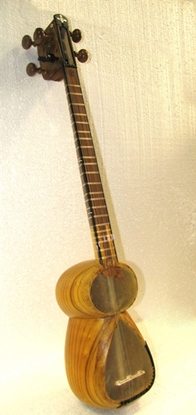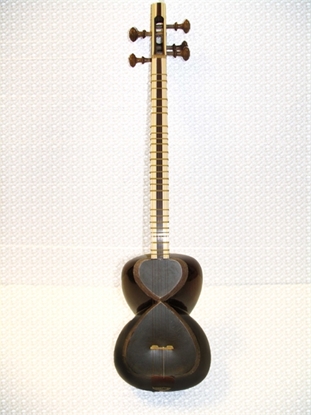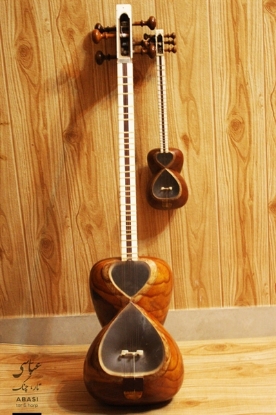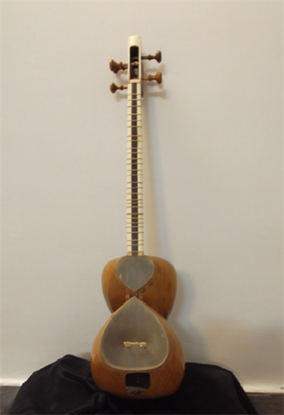Tar
History of Tar:
The word “tar” can be seen both in the music writings and poetries of the Medieval Persia. But, it is not clear that tar is the same as the present instrument. Also, in the past there were instruments which were called the shish tar, panj tar, and chahar tar. But, these names just tell us about the number of the strings in each instrument since “shish” is six, “panj” is five, and “chahar” is four. According to the paintings in the Chehelsotun building from the Shah Abas Safavid time, we can infer that at that time an instrument similar to the present tar did not exist. In one of these paintings showing a banquet of the Shah some instruments, such as the ney, daf, qanun, kamanche, and a string instrument like the tar are seen. Usually, the existence of some old paintings showing a particular instrument is one way of tracing back its history, and since such a painting was not found for the tar yet, we can say that the present day tar is not very old.
Probably, it dates back to 200 or 250 years ago. The oldest image of the tar dates back to the reign of Naser al-din Shah Qajar. In this painting Mirza Ali Akbar Khan Farahani is teaching the tar to some people at the court. The tar became a common urban instrument during Fath Ali Shah Qajar’s time. Also, the repertoire of Persian art music or radif was arranged by the tar players of this time. Except Azerbaijan, the tar does not exist in any regional music traditions of Persia. But, there is an instrument called rūbāb which is similar to the tar to some extents and it is played in Baluchistan, Pakistan, and Afghanistan.
Jean During, a contemporary French ethnomusicologist believes that the present tar is a descendent of the rūbāb since both have double bowls covered by an animal skin. There is a different version of the tar in Azerbaijan which is called Qafqazi tar. According to Vertkov and other scholars, this instrument was not seen in that province until the late eighteenth century. In that time, Sadiq Oqli, a skilled musician, added three drone strings to the Persian tar and changed its shape a little. Therefore, many believe that the Qafqazi tar is made after the Persian tar and is also a descendent of the rūbāb.Now, the Qafqazi tar has eight strings and its bowl is smaller than the Persian one. Like the tar of the Qajar period, the Qafqazi tar is held on the chest. The oldest tar which is detected in the West was the one seen in 1910 in a museum in Britain. Also, Gobineau, a French scholar, writes that he saw the tar playing of Aqa Ali Akbar Farahani in 1856 in Tehran.
For more informations click HERE




